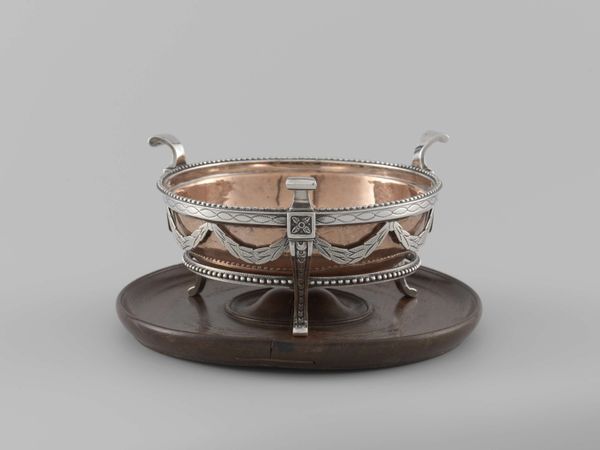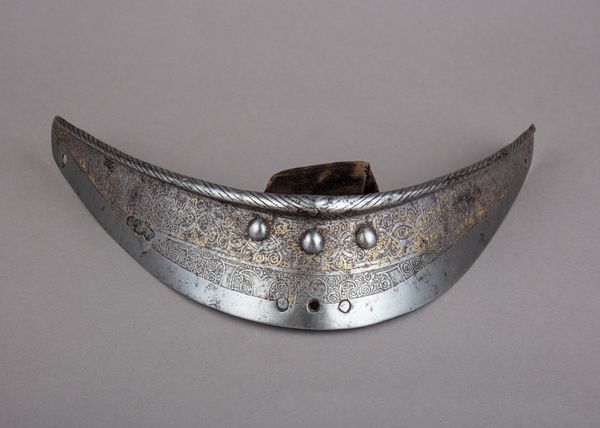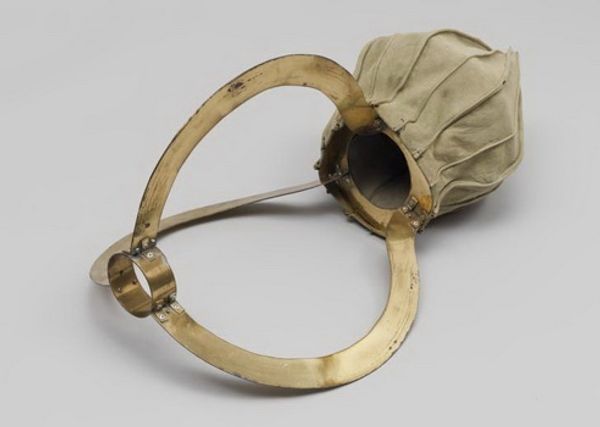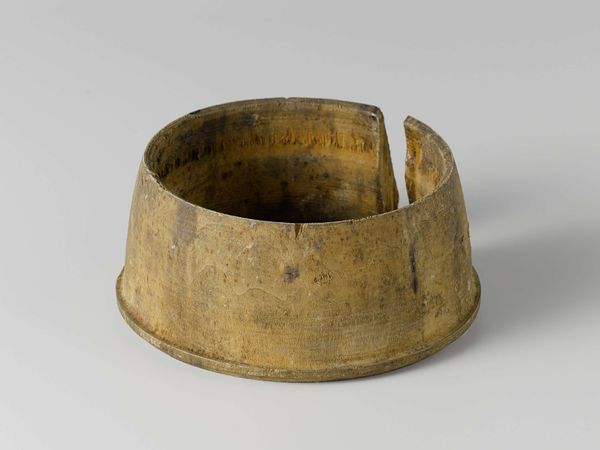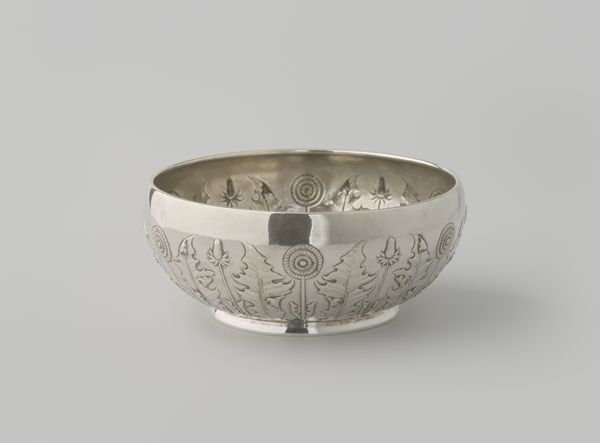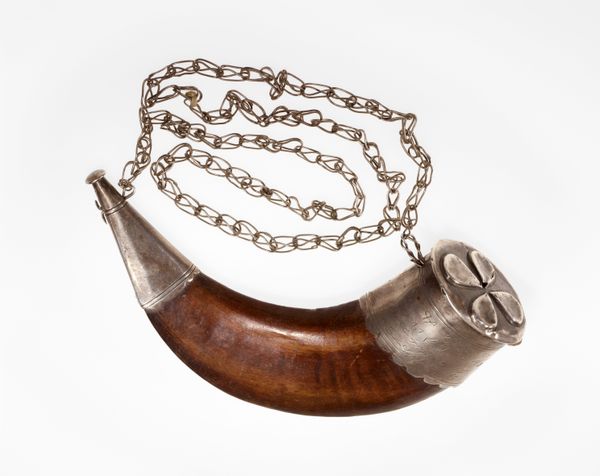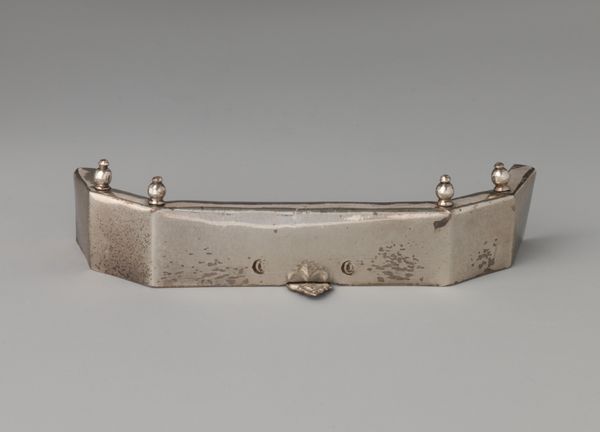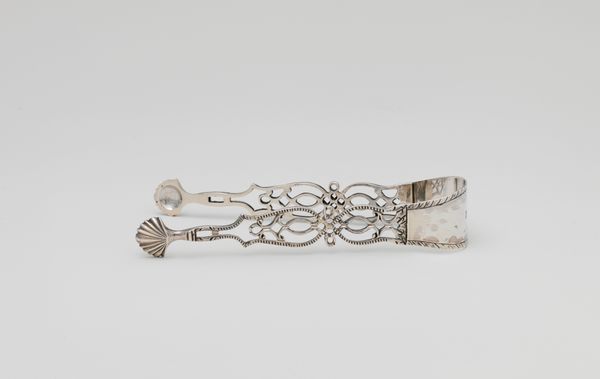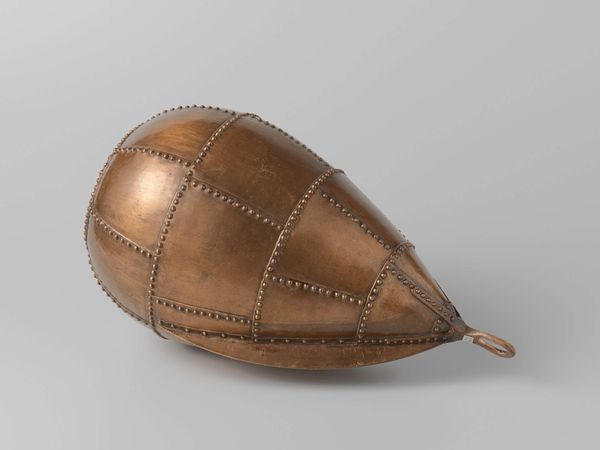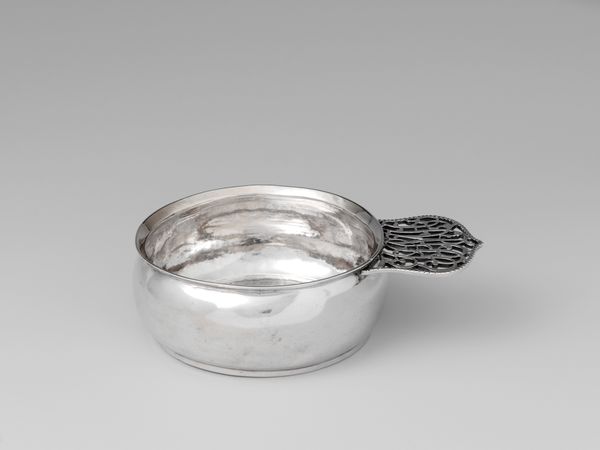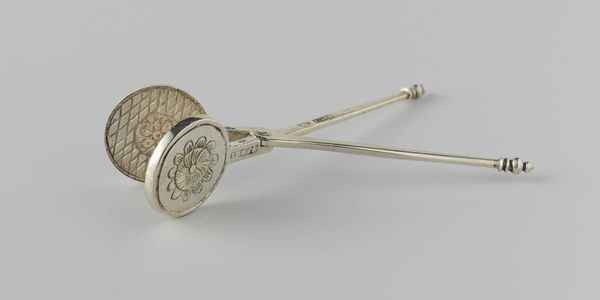
silver, metal
#
neoclacissism
#
silver
#
metal
#
decorative-art
Dimensions: height 5.7 cm, width 14.4 cm, depth 18 cm
Copyright: Rijks Museum: Open Domain
Curator: Before us is a 'Kap van zilver,' or silver cap, dating from around 1785 to 1800, created by Jacobus Carrenhoff. It exemplifies the Neoclassical movement through a decorative art lens. Editor: My first impression? Restraint. The severe form in bright silver suggests the dignity and austerity so sought in the late 18th century, but where is the riotous play of Baroque form and symbol? Curator: Precisely. Consider the metalwork: the pure arc of the band is so smoothly rendered. The formal simplicity speaks of classicism’s revival. Notice too the minimal decoration; this contributes to its cool perfection. Editor: Indeed, and such objects, made of precious metals, must surely signal power. Caps, like crowns or diadems, connote authority. Though in a form shorn of excesses. This must have belonged to a woman who wished to project control, order. Do you see similar symbols in its ornament? Curator: In its small scale floral clasps, perhaps a discreet echo of natural beauty subjected to reason’s firm rule. We find an elegance arising from precision of structure. Editor: Silver also has a curious relationship to folklore: a shield against darkness. While its Neoclassical context projects enlightened rationality, could we also entertain its role as talisman, for this wearer? Did this woman view it purely for its aesthetic design, or with a belief in its potential for symbolic fortification? Curator: A tempting idea. One cannot deny the confluence of rationalism with existing folk belief at this period. Editor: By contemplating how this culture imbued 'Kap van zilver' with meaning – as symbol of power, as exemplar of rational style – the cap bridges past ideas with modern inquiry. Curator: Indeed, reflecting on it in such diverse ways enhances our awareness that function and significance are not invariably disparate.
Comments
No comments
Be the first to comment and join the conversation on the ultimate creative platform.

